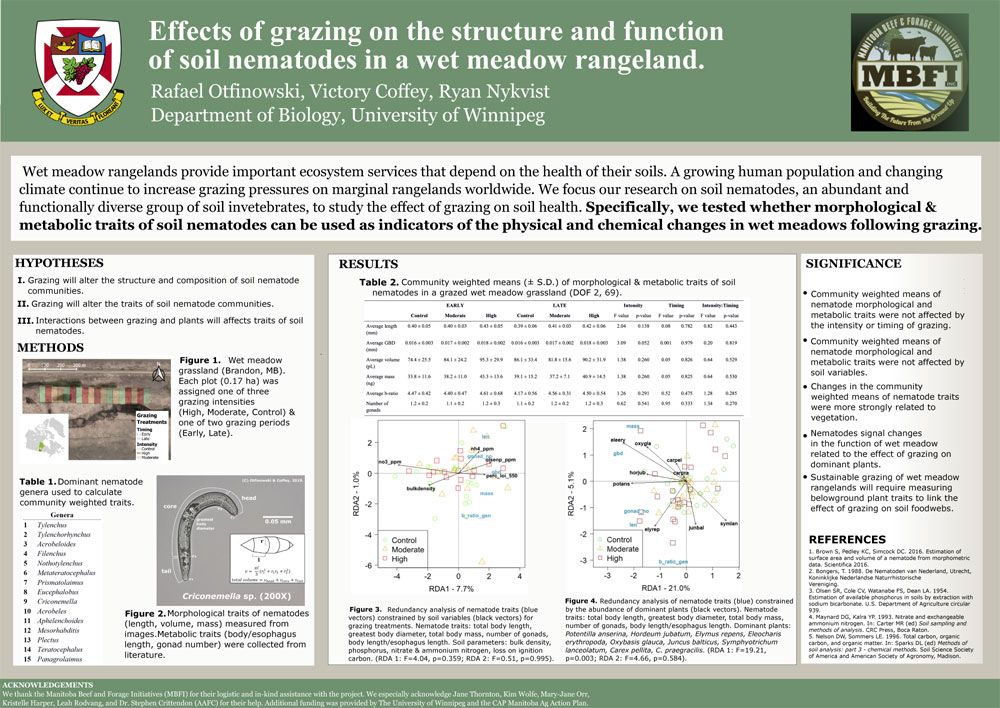
Grasslands provide ecosystem services that can be measured by their capacity to support diverse plant and soil communities. Here, we test whether soil nematodes can be used as indicators of soil health in wet meadow rangelands and how grazing intensity affects wet meadow communities above- and below-ground. We compared the structure, composition, and diversity of plant and nematode communities in a long- term grazing experiment in Manitoba. We extracted, counted, and assigned nematode genera to feeding groups to determine how grazing affects food web structure. We also measured morphometric traits of nematodes and collected traits related to their reproductive capacity from published literature. We hypothesized that grazing will: 1) alter the structure, composition, and the trait profile of nematode communities; and 2) that the effects of grazing on nematode communities will be mediated through its effect on soil and vegetation. Grazing had a significant effect on plant communities and soils. Early season, intense grazing decreased plant diversity and increased soil compaction. Although intense grazing increased the number of weedy species, late season, intense grazing also increased plant community richness and diversity. Contrary to our predictions, neither the length, volume, and mass of nematodes, nor their metabolic and reproductive traits, were related to soil variables. In contrast, nematode traits were related to the abundance of dominant plants, which responded strongly to grazing intensity. Our results demonstrate that intense grazing reduced plant diversity, which also reduced the diversity of soil nematodes. Our results also demonstrate that the dominance of wet meadow rangelands by weedy perennial and annual plants increased the length, body diameter and the number of gonads of soil nematode communities. By exploring links between grazing and soil function, our research contributes new knowledge to understand the drivers of soil health in wet meadow rangelands and helps support their sustainable grazing.

